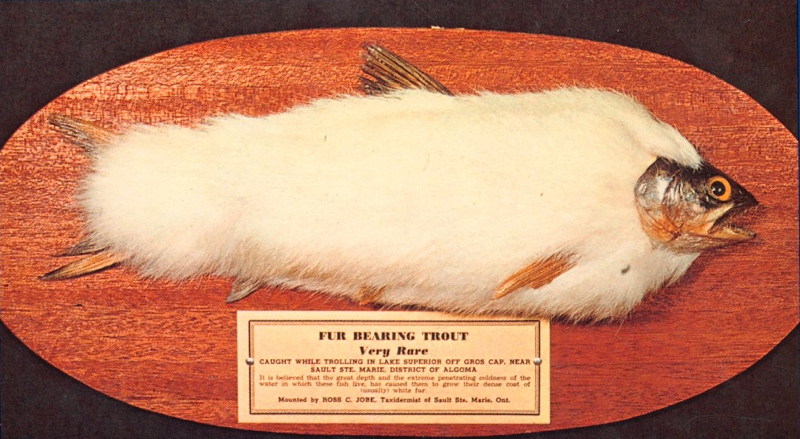The history books have taught us some seriously strange things about our ancestors. Before science was a functioning part of reality, communities looked to other disciplines as a way of gaining insight into the world around them. Storytelling became a major part of ancient life, making it easier to pass tale from town to town with few other forms of communication. Over the years, however, a fact or two might have been misplaced, leading to the creation of a new set of legends. These animals were a by product of a different kind of world, springing into life due to folklore, legend and old belief systems.
- Fur Bearing Trout
While the thought of a fish sprouting fur might seem ridiculous to us today, it was once a very viable part of reality. Having originated with some of the first settlers to the United States, the furred trout story cropped up in their letters home to loved ones and family. While there is little evidence as to why the story came about, the furred trout was set to pop up a few centuries later, in the late 1870s. The story goes that four jugs of hair tonic were accidentally spilled into the Arkansas River one year, leading to the fish sprouting fur.
- Unicorns
We’ve all heard of a unicorn before, but did you know where the legend originally came from? First described in the writing of Roman historian Pliny the Elder, the unicorn was originally described as “the fiercest animal” and one that was “impossible to catch alive”. The image of a unicorn also crops up in a number of medieval texts, as well as the Bible, in Numbers 24:8. While we cannot be sure how the idea of such a creature came about, contemporary historians believe it could be due to sightings of rhinoceros or one-horned antelope.
- Bonnacon
A beast that appeared as a cross between a bull and an oversized goat, the bonnacon was believed to use its own dung as a weapon. Described once again by Pliny the Elder, the beast was thought to be afraid of conflict, running at the sign of any adversary. As large as a horse, the bonnacon was described by Pliny the Elder as leaving a trail of dung in its wake, which would scorch anyone who tried to come into contact with it.
- Aspidochelone
Bigger than any sea creature we might be able to conjure up in our minds, the aspidochelone appears in a number of Biblical texts and Medieval bestiaries. The creature was said to be so huge that it was mistaken for an island and often stood in as an allegory for the devil. In ancient tales, the aspidochelone was noted for luring in sailors to take refuge on it back, before plunging down to the depths of the ocean.
- Jackalope
Dating back into more recent history, the jackalope reared its head into popular culture in 1932. Found in the woods by Wyoming resident Douglas Herrick, the creature was said to resemble a horned hare and was later mounted on the wall for all to see. The origins of the jackalope go back a whole lot further, however, dating to the 17th century and beyond. The creature is first known to have appeared in natural history books from the time, which took their inspiration from ancient Persian texts.






